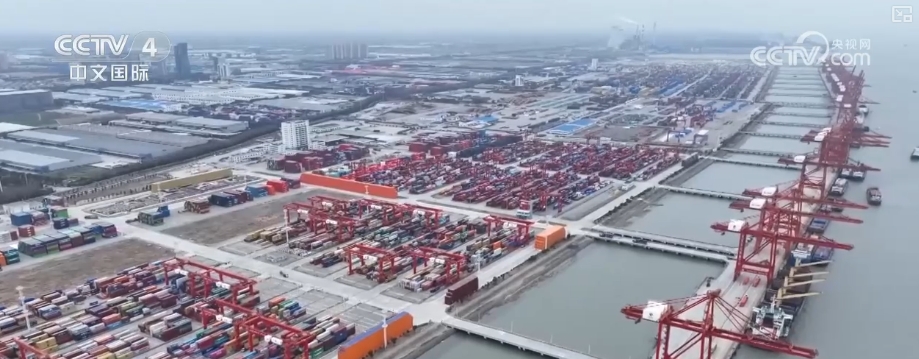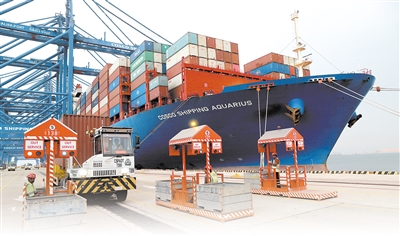Cambodia Rents Out The Gold Coastline, The United States Is Anxious, Where Is China's Winning?
Cambodia Rents Out The Gold Coastline, The United States Is Anxious, Where Is China's Winning?
At the end of 2019, Cambodia handed over a coastal area worth RMB 26.6 billion to China for development, and also gave the 90-kilometer-long coastline the operating rights for 99 years to China. As soon as this happened, there were a lot of discussions internationally. Some people said that this is Cambodia's trust
At the end of 2019, Cambodia handed over a coastal area worth RMB 26.6 billion to China for development, and also gave the 90-kilometer-long coastline the operating rights for 99 years to China. As soon as this happened, there were a lot of discussions internationally. Some people said that this was Cambodia's trust, while others said that there was a bigger chess game behind it.

There is a place called Qixinghai on the southwest coast of Cambodia. The beach is soft and the sea water is particularly colored, and there are coral reefs and sea turtles underneath. This area accounts for one-fifth of Cambodia's national coastline, with large tracts of forests and mangroves nearby. But Cambodia did not develop it itself, but instead allowed China to build airports and ports, and engage in tourism and industry.

The Chinese company has built a 3,400-meter runway here, which can take off and land large aircraft and build a deep-water port. The project plan includes hospitals, schools, factories and logistics centers, and it is necessary to build a self-sustaining small city. The geographical location is also very critical. It is 260 kilometers away from the capital Phnom Penh, only more than 50 kilometers away from the Thai border, and is close to the Indian Ocean route.
US think tanks have always suspected that this place would be used to build military bases, but the contract signed between Cambodia and China clearly states that it cannot be used for military purposes. Cambodia had just rejected the United States' proposal to build a military base and turned to cooperate with China, which made the United States very upset.
80% of China's oil has to pass through the Strait of Malacca every year, and if something goes wrong, it will have a great impact. After the deep-water port of the Qixinghai is built, it can directly connect to the Indian Ocean and reduce its dependence on Malacca. In addition, it is close to Thailand and Vietnam, and it may become an important logistics center in Southeast Asia in the future.
The friendship between Cambodia and China began decades ago. In 1955, Chinese leader Zhou Enlai proposed to "seek common ground while reserving differences" at the Bandung Conference, and Cambodian leader Prince Sihanouk agreed very much. Later, when the United States attacked Cambodia, Sihanouk went to China to take refuge twice, and China gave him a lot of assistance.
When Cambodia was rebuilt after the war, China built 70% of roads and bridges, with an investment of more than $5 billion. These infrastructures have driven the local economy, and Cambodia's GDP has increased 10 times in 20 years. Most of the ready-to-wear exported in Cambodia are produced by Chinese-funded factories.

When the epidemic was at its worst in 2020, China first sent 2.2 million doses of vaccines to Cambodia, and Cambodia also supported China internationally. The Seven Star Sea project is a continuation of cooperation between the two countries. Cambodia exchanges resources for technology and funds, while China has received strategic convenience.
The project contract stipulates that the annual rent is only $1 million, but Cambodians think it is worth it. They hope that China can help them turn remote areas into transportation hubs and drive more industries. However, some people are worried that excessive dependence on China will bring risks, but the Cambodian government insists that this is a win-win situation.
The United States has always wanted to expand its influence in Southeast Asia, but Cambodia's choice has made the United States very passive. American think tanks continue to hype the issue of militarization, but both Cambodia and China deny it.

The Qixinghai project also has a 120 square kilometers of reserve to protect mangroves and coral reefs. Cambodia has never tried this model of developing and protecting at the same time before. They want to see if they can balance the economy and ecology.
In the history of cooperation between Cambodia and China, China has not made any political demands, but only helped to develop infrastructure and industries. This model makes Cambodians feel reliable. In contrast, the United States always wants to interfere in its internal affairs, and Cambodia is more willing to choose practical help.
The airport and port of Qixinghai are still under construction, and the specific results will take several years to see clearly. But this incident has shown that developing countries have their own choices among major powers, and they value real interests more than ideology.
Cambodia rents the coastline to China, where China builds ports and airports, and the United States is worried about being marginalized. Behind this is a contest between economic interests and geopoliticality, but Cambodians only care about whether they can live a better life.





